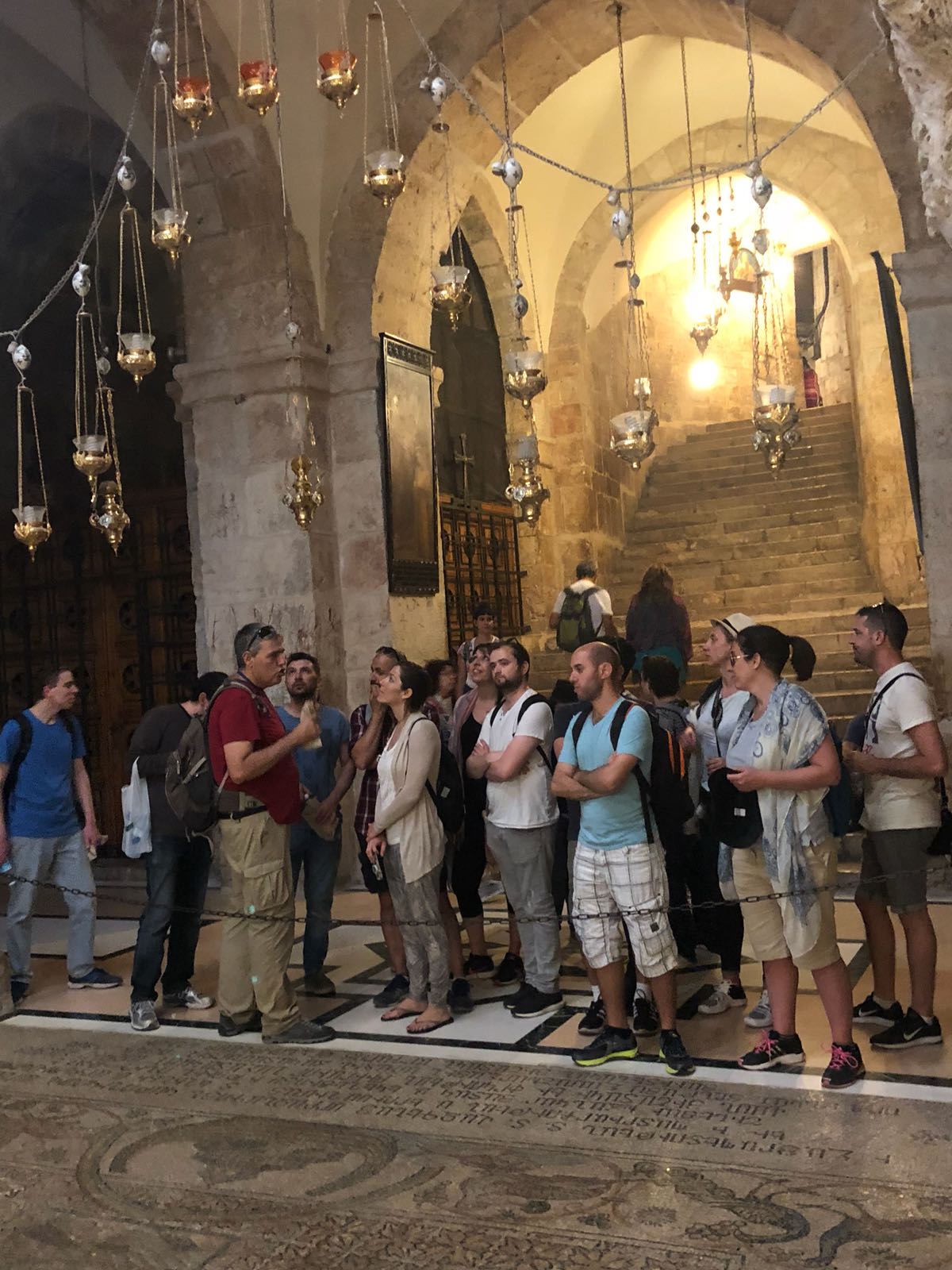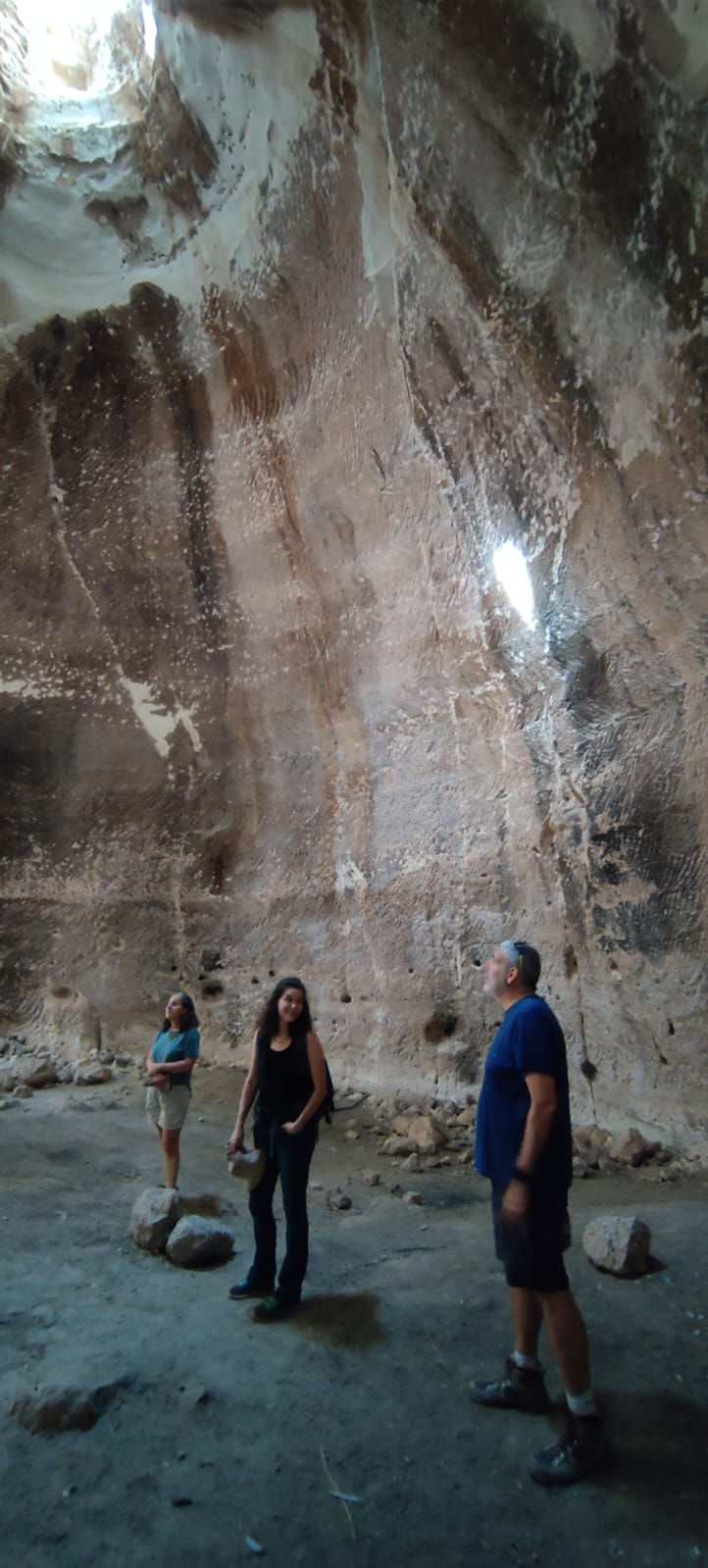Land of Caves - ארץ המערות
- Yoav Shiloah

- Oct 1, 2022
- 2 min read

אזור דרום שפלת יהודה הוא אזור מרתק!
האזור בין מישור החוף להרי יהודה היה בעבר מהאזורים החשובים בארץ ובו ערים מתקופות שונות בהיסטוריה של ארץ ישראל כמו: גת הפלישתית, מרשה, לכיש, בית גוברין שנקראה גם Eleutheropolis, "עיר בני החורין" ועוד...
אך הפעם אני רוצה לספר על תופעה ייחודית באזור, מערות הפעמון הפזורות בכל חבל הארץ.
המסלע הייחודי של האזור עם שכבת סלע קשה הנקרא "נארי" ומתחתיו סלע הקרטון הרך אפשרו את חציבת מערות הפעמון המאפיינות את האזור. החוצבים פתחו תחילה פתח צר בסלע הקשה וכשהגיעו לשכבת סלע הקרטון הרך, הם הרחיבו את המערה כלפי מטה בצורת פעמון.
המערות שמשו כמחצבות לחומרי בנייה, מגורים, מתחמים לגידול יונים - קולומבריום (יונה בלטינית - columba), מחילות מסתור למורדים היהודים ברומאים במרד הגדול בשנת 70 לספירה ובמרד בר כוכבא כ-60 שנה לאחר מכן, מערות קבורה, מחסנים ומאגרי מים, וכל מה שאפשר להעלות על הדעת שניתן לעשות עם מרתף ענק מתחת לבית...
בנוסף התגלו באזור ממצאים רבים ומרתקים מתקופות שונות והפעם ביקרנו בחרבת בית לויה וראינו את הפסיפס הכנסייה המרהיב מהתקופה הביזנטית מלפני כ-1,500 שנה ובו עיטורים של בעלי חיים, צמחים, אלמנטים גאומטריים ועוד.
אנו ביקרנו בסתיו ונהנינו גם מפריחת החצבים המרהיבה המבשרת את סוף הקיץ והחום הגדול (סוף כל סוף...)
חשוב להדגיש כי באזור אלפי בורות הנפערים למערות ענק מתחתיהם ולפעמים הם נסתרים. חשוב מאוד להישאר על שבילים מסומנים ויציבים ומומלץ לבקר עם מישהו שמכיר את השטח
The Southern Judean Lowlands is a fascinating region!
The land between the coastal plain and the Judean Mountains used to be one of the most important areas in the land and contains cities from different periods in the history of Israel such as: Philistine Gath, Maresha, Lachish, Beit Govrin also called Eleutheropolis, "City of the Free" and more...
But this time I want to tell about a unique phenomenon in the region, the bell caves.
The unique bedrock of the area with a layer of hard rock called "Nari" and underneath the soft cardboard rock allowed the excavation of the bell caves that characterize the area. The carvers first opened a narrow opening in the hard rock and when they reached the soft chalk rock layer, they widened the cave downwards in the shape of a bell.
The caves were used as quarries for building materials, residence, pigeon breeding complexes - columbarium (pigeon in Latin - columba), underground hideouts used by the Jewish rebels against the Romans in the Great Revolt in 70 AD and in the Bar Kochba Revolt about 60 years later, burial caves, warehouses and reservoirs, and everything you can imagine that can be done with a huge cellar under the house...
In addition, many fascinating findings from different periods were discovered in the area, and this time we visited the ruin of Beit Loya and saw the magnificent church mosaic from the Byzantine period from about 1,500 years ago, with decorations of animals, plants, geometric elements, and more.
We visited in autumn and also enjoyed the spectacular blossoming of the squills which are a sign for the end of summer and the great heat (finally...)
It is important to emphasize that in the area there are thousands of pits that open into huge underground caves below them and sometimes they are hidden. It is very important to stay on marked and stable paths and it is recommended to visit with someone who knows the area.






































Comments